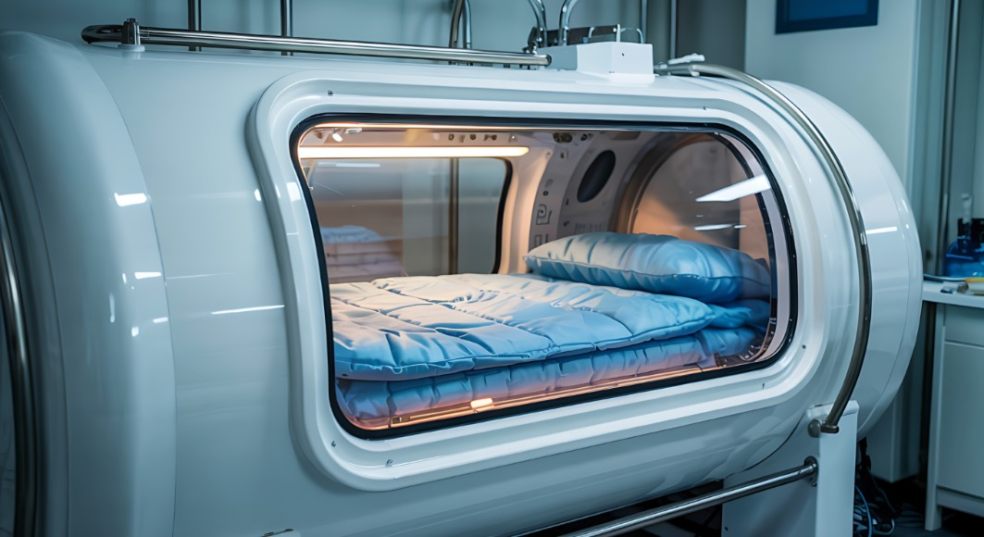
How Hyperbaric Oxygen Therapy Supports Healing
Among modern medical treatments, few therapies are as fascinating as hyperbaric oxygen therapy (HBOT). This remarkable treatment, which involves breathing pure oxygen in a pressurised environment, has captured the attention of healthcare professionals worldwide for its unique ability to accelerate healing and recovery. By dramatically increasing oxygen availability in tissues, HBOT supports the body's natural healing processes through multiple interconnected pathways. Understanding these diverse mechanisms reveals why this therapy has become an invaluable tool for treating conditions where conventional approaches have reached their limitations.
Accelerating Wound Healing and Tissue Repair
Many wounds fail to heal properly due to insufficient oxygen levels in the affected tissues—a condition known as tissue hypoxia. Diabetic foot ulcers, radiation-induced tissue damage, pressure sores, and severe burns are prime examples of wounds that struggle to heal due to compromised oxygen delivery.
The hyperoxygenated environment created by HBOT stimulates several crucial healing processes simultaneously. Fibroblasts, the cells responsible for producing collagen and other structural proteins, become significantly more active in oxygen-rich environments. This leads to accelerated formation of new connective tissue and stronger wound closure. The therapy also promotes angiogenesis—the formation of new blood vessels—which establishes better long-term blood supply to healing tissues.
HBOT also enhances the migration and proliferation of epithelial cells, which are essential for closing wound surfaces, as well as improves the function of growth factors and cytokines that orchestrate the healing cascade. This comprehensive support system addresses multiple barriers to healing simultaneously, often succeeding in closing wounds that have remained open for months or even years despite conventional treatment approaches.
Given the complexity of wound healing physiology and the sophisticated mechanisms involved in HBOT treatment, patients seeking this advanced therapy should prioritise clinics equipped with a modern, state-of-the-art hyperbaric oxygen chamber. They can provide the precise pressure protocols and safety monitoring necessary for optimal wound healing and tissue repair outcomes.
Strengthening Immune Function and Fighting Infection
White blood cells, particularly neutrophils, require oxygen to produce the reactive oxygen species they use to destroy bacteria and other pathogens. In hypoxic conditions, these immune cells become significantly less effective, allowing infections to persist and potentially worsen.
HBOT enhances immune function through multiple sophisticated mechanisms. The increased oxygen availability directly improves the killing capacity of white blood cells, making them more effective against both common and resistant bacteria. This enhanced antimicrobial activity is particularly valuable when dealing with biofilm-forming bacteria, which create protective layers that shield them from antibiotics and immune attacks. The high oxygen environment can penetrate these protective barriers and enhance the effectiveness of concurrent antibiotic treatments.
Furthermore, many bacteria, particularly anaerobic species that thrive in low-oxygen environments, are directly inhibited or killed by the high oxygen levels achieved during treatment. Clostridium species, which cause gas gangrene and other serious infections, are particularly susceptible to oxygen toxicity. This dual action—boosting the body's natural defences whilst creating an inhospitable environment for harmful microorganisms—makes HBOT particularly valuable in treating chronic infections, necrotising fasciitis, and osteomyelitis that have proven resistant to conventional antibiotic therapy alone.
Reducing Inflammation and Supporting Recovery
Whilst acute inflammation is necessary for initial healing, prolonged inflammatory responses can become counterproductive, creating a cycle of tissue damage and impaired recovery that prevents normal healing processes from proceeding effectively.
The therapy helps regulate inflammatory processes by influencing the production of various inflammatory mediators, including pro-inflammatory cytokines such as tumour necrosis factor-alpha and interleukin-1. HBOT promotes the resolution phase of inflammation by supporting the body's natural mechanisms for clearing inflammatory debris and transitioning from a pro-inflammatory to an anti-inflammatory state. This involves enhancing the activity of specialised pro-resolving mediators that actively promote the clearance of inflammatory cells and damaged tissue components.
The anti-inflammatory effects extend beyond simple reduction of swelling and pain. HBOT helps preserve tissue integrity by reducing the production of destructive enzymes and free radicals that can cause collateral damage during inflammatory responses. This protective effect is particularly beneficial for conditions such as traumatic brain injury, stroke recovery, and various inflammatory bowel conditions where excessive inflammation not only hinders the healing process but actively contributes to ongoing tissue destruction. By creating a more balanced inflammatory environment, HBOT allows the body's repair mechanisms to function more effectively whilst minimising harmful side effects.
Promoting Stem Cell Mobilisation and Tissue Regeneration
HBOT has the ability to stimulate the release and activity of stem cells from bone marrow and other reservoirs throughout the body. These remarkable cells have the potential to differentiate into various tissue types, making them crucial for repair and regeneration processes that extend far beyond simple wound healing.
The mobilised stem cells travel through the bloodstream to areas of injury or damage, where they contribute to tissue repair by differentiating into the specific cell types needed for restoration. This process is guided by chemical signals released from damaged tissues, creating a targeted response that directs healing resources where they are most needed. The stem cells can differentiate into various cell types including endothelial cells for blood vessel formation, neurons for nerve repair, and tissue-specific cells for organ regeneration.
This regenerative effect is particularly valuable in treating conditions affecting the nervous system, where traditional healing mechanisms are severely limited due to the brain and spinal cord's restricted ability to self-repair. These include cerebral palsy, traumatic brain injury, and stroke, where the combination of enhanced oxygen delivery and increased stem cell activity creates a synergistic effect that can promote recovery in tissues previously thought to have minimal regenerative potential. The therapy also shows promise in supporting recovery from heart attacks, where stem cells can help regenerate damaged cardiac muscle tissue.
Conclusion
As our understanding of HBOT's mechanisms continues to evolve, its applications are expanding beyond traditional uses into exciting new territories. From supporting recovery after stroke to potentially slowing aspects of the ageing process, this therapy continues to demonstrate the profound impact that optimising cellular oxygen availability can have on human health. For patients facing challenging healing circumstances, HBOT offers hope where conventional treatments may have reached their limitations, representing a powerful tool in modern medicine's arsenal for supporting recovery and restoration.

















